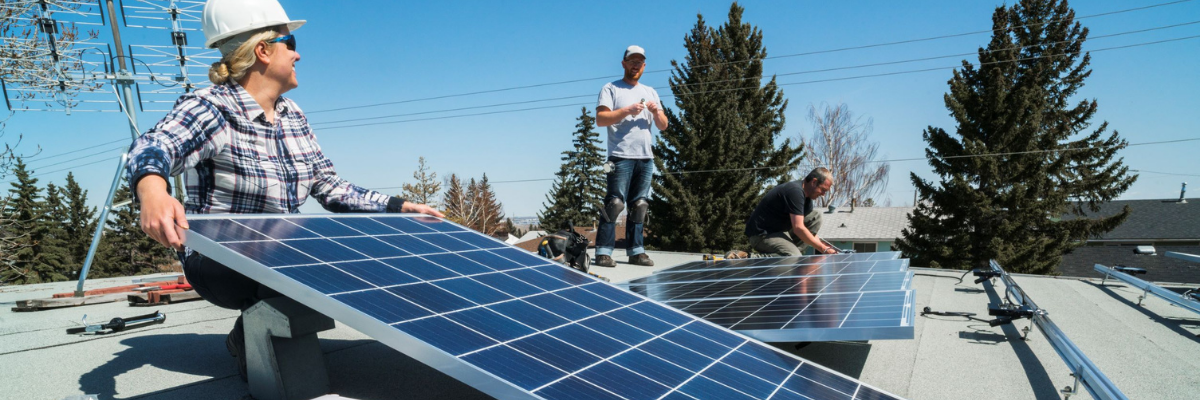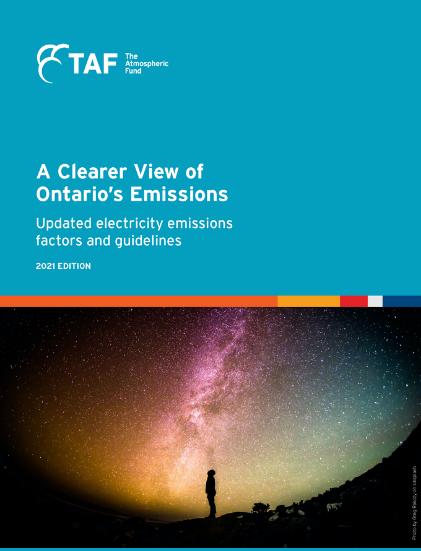Prime Minister Trudeau, along with the US and the UK, committed at COP26 in Glasgow to decarbonizing the electricity grid by 2035. Ontario needs to meet that goal, so we had better start using accurate numbers for quantifying electricity emissions.
Emissions factors provide a standard way to quantify the impacts of various interventions on emissions from electricity. To measure the effectiveness of a conservation program, for instance, you need an in-depth understanding of Ontario’s electricity emissions and appropriate emissions factors. The problem is, the standard available numbers do not represent the complexities of the grid.
TAF first published electricity emissions factors in 2017, and have updated them again in a new report, A Clearer View of Ontario’s Emissions: Updated Emissions Factors and Guidelines. The guidelines are designed to support policymakers, engineers, scientists, electricity industry professionals, and non-profit organizations in accurately estimating the carbon impact of climate actions. We recognize that while the math itself may not be relevant to many people, the implications are highly relevant to our ability to influence good decisions, generate political will and smart investments – and ultimately to decarbonize the grid.
Solar energy is one of the best examples of how we’re misreading the full picture of carbon emissions from electricity. Using standard “average” emissions factors from the National Inventory Report (which almost everyone uses) that measure carbon reduction from solar power at 30 grams per kwh, solar PV would be among the least cost-effective climate actions in Ontario. We’d be looking at a cost of about $4,250 per tonne for a rooftop residential system, looking over 20 years.
But using an average emissions factor for this purpose is simply wrong. It implicitly assumes that solar energy primarily displaces power from nuclear and hydro plants, ignoring the fact that gas plants are more frequently the marginal source of supply. If you use the “peak Marginal Emissions Factor” (peak MEF), then the emissions reduction from solar PV in Ontario is shown to be 4.4 times higher. Solar becomes better from a climate action cost perspective, although not a slam dunk – in the neighbourhood of $900 per tonne over 20 years.
If you use a “forecasted peak MEF,” taking into account that without intervention, natural gas is increasing every year going forward, then the emissions reductions from solar PV increase by a factor of 10.8 over a 20-year horizon, bringing residential rooftop solar PV into the range of $375 per tonne (compared to the standard that puts it over $4,000 per tonne). Here we can see that solar PV in Ontario is a very cost-effective climate action, one that should be prioritized. It’s actually more cost effective than deep retrofits (not factoring other community and health benefits related to retrofits), and comparable to EVs on an incremental cost basis.
Now if you add in the life cycle impact, then the emissions reduction from solar PV increases by a factor of 19.8 times compared to a standard emissions factor (notwithstanding life cycle emissions of the panels, which is not in scope for this piece, but can be considered negligible compared to life cycle grid emissions).
Emissions factors are not just about getting a more precise estimate of carbon impacts. Using the solar example, the status quo practice results in solar making no sense as a climate action. With an appropriate factor it makes a lot of sense. The same applies to electricity conservation.
The province recently amended regulations to make solar environment in Ontario even more difficult, and expressly stated the rationale that Ontario has a clean grid so there no significant carbon benefit to solar in Ontario. This would be true – unless you adopt more accurate emissions factors.
These best practices in GHG quantification methodology are crucial to decarbonizing the electricity sector and holding decisionmakers accountable for sound decision-making. Check out the report and share here.


